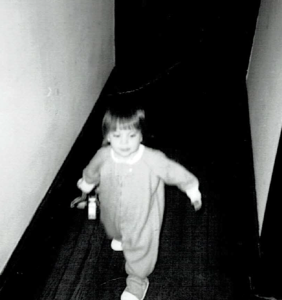Saturdays with Seniors: Bill’s Gift
January 2, 2021 • 8 Comments • Posted in careers/jobs for people who are blind, guest blog, memoir writing, travel, writing promptsI am pleased to Welcome Bill Gordon back today as our first Saturdays with Seniors guest blogger for 2021. Born and raised in Kansas, Bill lived all over the country during his nearly 50-year career in library and association management. When he retired in 2002, he was the Executive Director of The American Library Association, located here in Chicago, and has called Chicago home ever since. Bill, 84, says life so far has been “a great adventure.” Lucky for us, he enjoys sharing his colorful life stories through his participation in our Monday Village Chicago memoir-writing class. Aware that writers had been spending an inordinate time at home in 2020, I asked them to choose an object they have in their home and write about it. Meeting on Zoom allowed writers to show the chosen object on video as well, and today we are delighted to share Bill’s essay and photo here to wish you all a new year full of good will, new friendships, hope and happy surprises.
by Bill Gordon
In 1996, the planners of the annual conference of the International Federation of Library Associations and Institutions invited me, as the Executive Director of the American Library Association, to be one of the primary speakers. The Conference would be in Amsterdam, one of my favorite international cities. How could I say no?
All my travel arrangements were made and paid for by the Federation. My accomations were in a stunning boutique hotel constructed by combining eight seventeenth century buildings. By then I had been in Amsterdam many times, but the city offered always new places to explore — streets, museums, cafes, the famous red light district, and, of course, art galleries. From the time I had any disposable income I started buying art that “spoke” to me and that I could afford, even if just barely.
Every spare moment from the conference found me wandering the streets and neighborhoods of the city. Late one afternoon walking through an unfamiliar neighborhood, I was caught in a downpour. To get out of the rain, I dashed into the entryway of a building…which turned out to be an art gallery!
The gallery was closed, but I was captivated by the paintings on display in the windows — all by the same artist — Gerti Bierenbroodspot. Throughout the night I could think of little else but the paintings I had seen.
Bierenbroodspot’s paintings drew me back to the gallery, where I admired the group of paintings on display. The series was titled NUDO and was a collection of eight paintings of nude men. There was nothing prurient about the paintings. They were classic in an unusual way, with vivid dashes of color and a reverent, yet bold, treatment of the male form.
One of the paintings especially “called” to me, but it was marked $6,000. Way out of my price range.
On my final day in Amsterdam I wandered back to the gallery to see “my” painting one more time. As I entered the gallery a bold female voice called out, “Who goes there?” The voice, as it turned out, belonged to Gerti Bierenbroodspot, a handsome strong-looking woman of an uncertain age.
We began to talk, first about her art, then about me, then about her career and her life and her studio in Tuscany. She invited me to tea. We talked some more, and so long that she invited me to dinner at a nearby café. After walking back to the gallery, I pointed out my favorite painting.
Knowing how much I wanted it, she said “Buy it!”
“I can’t afford it!” I said.
She asked, “Can you live without it?”
Acknowledging the obvious, I said “I’ll have to.” We hugged and reluctantly parted. I had to return to the U.S. the next day
About two weeks later I was in my Chicago office when I received a call from the mailroom letting me know that a large wooden crate had arrived addressed to me. Assuming it was some sort of promotional display from a vendor, I told the mailroom clerk to hold it. “I’ll check on it at the end of the day.”
Much to my surprise, it was “my” painting, in a beautiful gold frame, measuring 37 by 52 inches. Written across one of the slats on the crate was the word “SERENDIPITY.” The note attached to the painting said, in an impressive scrawl, “Enjoy this gift for the rest of your life from one who knows you will: Gerti Bierenbroodspot.”





